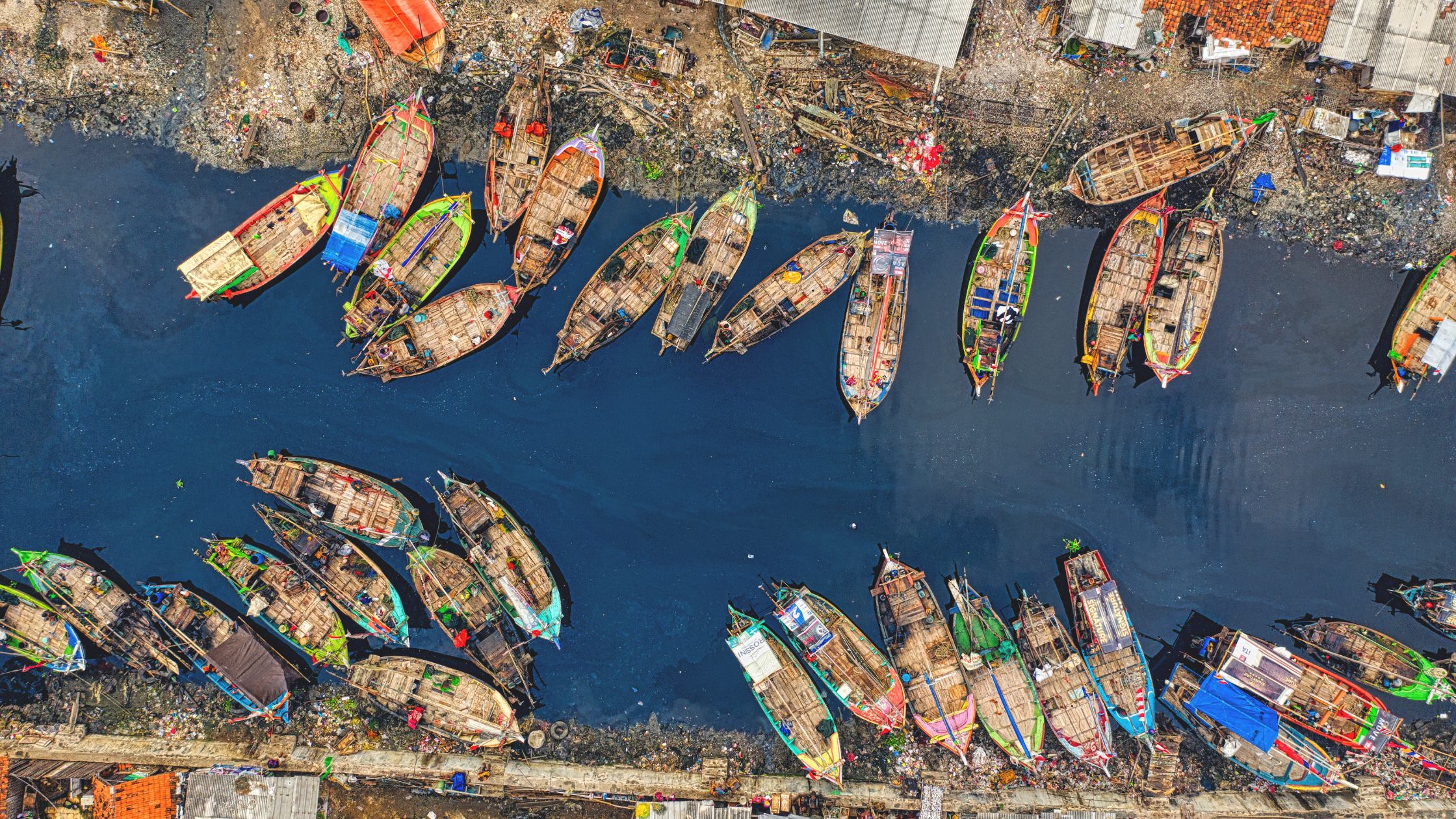The Senegal-Niger river axis has always been a source of economic wealth and a crossroads of cultural diversity for West Africa. The Senegal and Niger rivers, which pass through several countries in the region, have not only served as trade routes but have also facilitated the spread of knowledge, beliefs, and traditions. This article provides an introduction to the links between river economy and cultural dynamics along this axis, highlighting the role of rivers as drivers of development and connectivity between peoples. This theme will be explored at the Young Researchers’ Conference, with the aim of better understanding how river economy contributes to social and cultural transformations in the region.
River Economy: Trade and a Means of Subsistence
The river economy along the Senegal-Niger axis is based on essential activities such as fishing, agriculture, and transportation. For centuries, waterways have been used to transport agricultural products, salt, fish, and more recently industrial goods. Riverine communities rely on the rivers to irrigate their land, raise livestock, and feed their families through fishing (McIntosh, 2005). These activities not only support the local economy but also allow populations to remain autonomous and maintain traditional practices.
River transport plays a crucial role in the economic development of the region. The rivers serve as communication routes connecting isolated communities to urban centers and international markets. Trade along the Senegal-Niger river axis has developed since pre-colonial times, contributing to the emergence of prosperous cities such as Djenné, Timbuktu, and Saint-Louis, all of which benefited from their strategic location along the river routes (Curtin, 1975). Today, while road and rail transport have taken precedence, river economy remains essential for certain remote regions and for seasonal activities.
From Economic Exchange to Cultural Dynamics
Economic exchanges along the rivers have promoted intense movement of people and ideas. Riverine communities have not only shared material goods but also cultural values, religious practices, and artistic expressions. River markets have become spaces for social interaction and cultural fusion, allowing local populations and travelers to meet and exchange (Insoll, 2003).
The diversity of cultures along the Senegal-Niger axis is expressed through music, dance, and literature. For example, Manding music and the kora, the emblematic instrument of West Africa, are strongly influenced by the traditions of communities settled along the rivers. These forms of expression are both identity manifestations and means of communication between different communities. The richness of these oral and artistic traditions reflects the influence of river exchanges on the cultural dynamics of the region (Hale, 1998).
Religion and Social Practices Along the River Axis
The Senegal and Niger rivers have also served as vectors for the spread of religious practices. Islam, introduced by Arab traders and scholars, spread along these riverways, becoming a central component of the culture of riverine societies. Marabouts and religious scholars, traveling on the waterways, contributed to the establishment of Quranic schools and spiritual centers, which in turn influenced the social structure and values of local communities (Robinson, 2000).
Today, religious rites and annual festivals remain important moments in the lives of riverine populations. For example, the Mawlid, the celebration of the birth of the Prophet Mohammed, brings entire communities together for processions, songs, and prayers, marking the significance of Islam in the culture of peoples along the river axis. These celebrations illustrate how religion, integrated into cultural dynamics, is strengthened by river networks and the proximity of populations (Davidson, 1991).
Modern Challenges: Preserving Cultural Heritage Amid Economic Changes
While river economy has historically allowed the flourishing of cultural dynamics, it now faces significant challenges. Water pollution, siltation, and the construction of dams threaten the ecological balance of the rivers, putting the livelihoods of local populations at risk. These changes affect not only the river economy but also the cultural practices that depend on it. For example, the depletion of fish in certain segments of the rivers impacts ceremonies and rituals related to fishing, thus weakening the intangible heritage of riverine communities (Gallin et al., 2010).
Preserving this cultural heritage amid economic and environmental pressures requires integrated management of river resources. Environmental protection initiatives, combined with programs promoting traditional knowledge, can help maintain the link between economy and culture along the rivers. Raising awareness among younger generations about the cultural wealth of their regions is also crucial for ensuring the continuity of these practices and promoting sustainable development that respects local identities (Conrad, 2012).
Conclusion
The river economy and cultural dynamics along the Senegal-Niger axis reflect the historical richness and diversity of the peoples of this region. The rivers have not only supported local economies but have also woven links between different cultures, religions, and traditions. The Young Researchers’ Conference on this river axis will provide an opportunity to highlight these complex dynamics and reflect on ways to preserve this unique heritage. By valuing both the economy and culture of riverine populations, it is possible to build a future where the rivers continue to be engines of development and diversity for West Africa.
References
-
Conrad, D. C. (2012). Empires of Medieval West Africa: Ghana, Mali, and Songhay. Infobase Publishing.
-
Curtin, P. D. (1975). Economic Change in Precolonial Africa: Senegambia in the Era of the Slave Trade. University of Wisconsin Press.
-
Davidson, B. (1991). African Civilization Revisited: From Antiquity to Modern Times. Africa World Press.
-
Gallin, C., et al. (2010). Mapping Historical Landscapes in the Sahel. Journal of African Archaeology, 8(1), 23-40.
-
Hale, T. A. (1998). Griots and Griottes: Masters of Words and Music. Indiana University Press.
-
Insoll, T. (2003). The Archaeology of Islam in Sub-Saharan Africa. Cambridge University Press.
-
McIntosh, S. K. (2005). Ancient Middle Niger: Urbanism and the Self-Organizing Landscape. Cambridge University Press.
-
Robinson, D. (2000). Paths of Accommodation: Muslim Societies and French Colonial Authorities in Senegal and Mauritania, 1880–1920. Ohio University Press.


